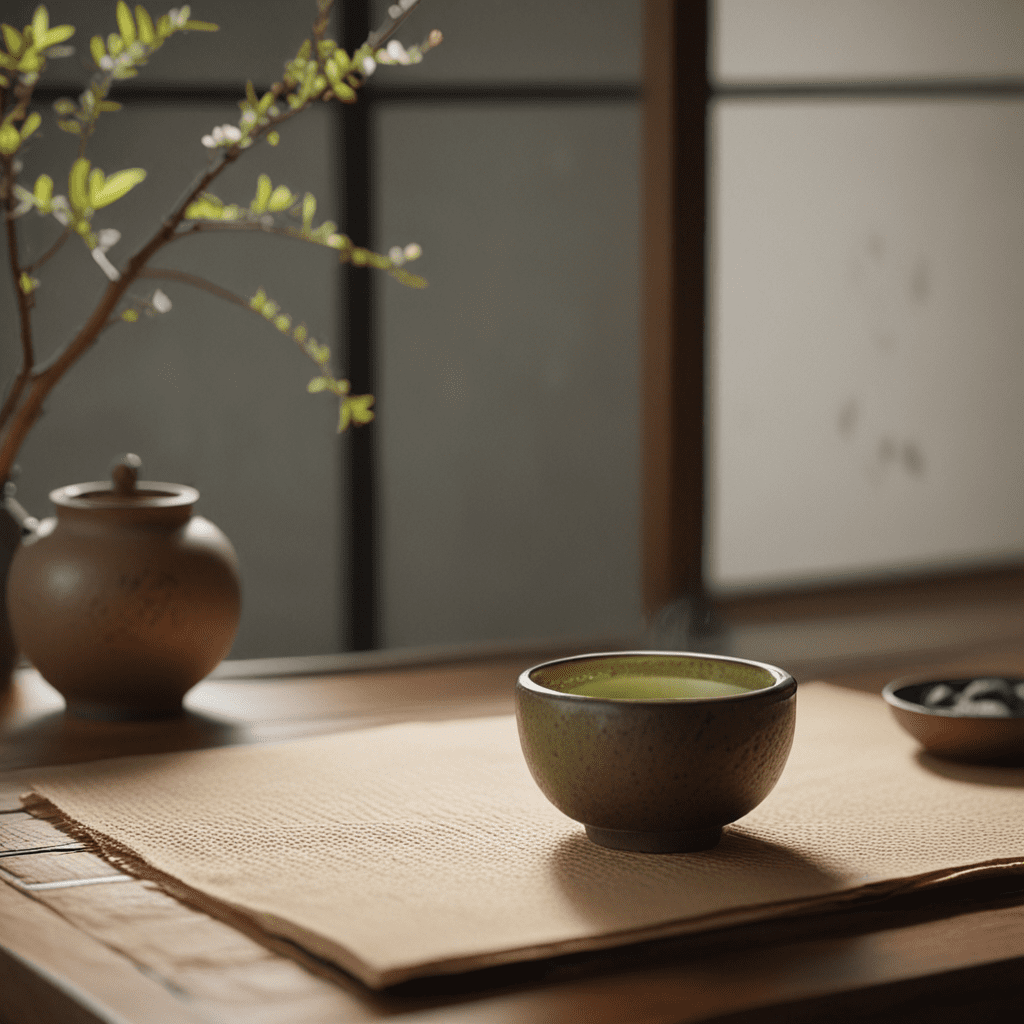Embracing Simplicity: Japanese Tea Ceremony Philosophy
The Japanese tea ceremony, known as Chado or Chadō, is a ritualized form of tea preparation and consumption that has been practiced in Japan for centuries. It is more than just a way of making and drinking tea; it is a holistic practice that encompasses art, philosophy, and spirituality. The tea ceremony emphasizes simplicity, harmony, and tranquility, and it is believed to have a profound impact on the mind and body.
Historical Roots and Origins
The Japanese tea ceremony has its roots in the 9th century, when Buddhist monks introduced tea to Japan from China. Tea was initially used as a medicinal beverage, but it gradually became popular as a recreational drink. The tea ceremony began to take shape in the 15th century, when tea master Sen no Rikyu developed a set of principles and rituals for the practice. Rikyu's principles of wabi-sabi, which emphasize simplicity and imperfection, became the foundation of the tea ceremony.
The Principles of Wabi-Sabi
Wabi-sabi is an aesthetic concept that celebrates the beauty of imperfection and impermanence. It is based on the idea that true beauty lies in the natural, the simple, and the unadorned. The tea ceremony embodies the principles of wabi-sabi through its use of simple tea utensils, rustic tea rooms, and natural surroundings. The tea ceremony strives to create a sense of tranquility and harmony, and it is believed that the practice of wabi-sabi can help to cultivate a deeper appreciation for the present moment.
The Role of Nature and Imperfection
Nature plays a central role in the tea ceremony. The tea room is often located in a tranquil setting, surrounded by nature. The tea utensils are made from natural materials, such as wood, bamboo, and clay. The tea ceremony is also a celebration of imperfection. The tea utensils are often asymmetrical and irregular in shape, and they may have cracks or other imperfections. These imperfections are not seen as flaws, but rather as a reminder of the beauty of the natural world.
The Importance of Ritual and Protocol
The tea ceremony is a highly ritualized practice, with every action and gesture being carefully prescribed. The rituals of the tea ceremony serve to create a sense of order and harmony, and they help to focus the mind on the present moment. The protocols of the tea ceremony are also important for maintaining the tradition and integrity of the practice.
The Elements of the Tea Ceremony
The tea ceremony typically involves four elements: the tea room, the tea utensils, the tea, and the guests. The tea room is a simple and rustic space, often located in a tranquil setting. The tea utensils are made from natural materials, such as wood, bamboo, and clay. The tea is a high-quality green tea, known as matcha. The guests are invited to the tea ceremony by the host, and they are expected to follow the protocols of the ceremony.
The Zen Influence
The tea ceremony is deeply influenced by Zen Buddhism. Zen emphasizes the importance of mindfulness, meditation, and the present moment. The rituals of the tea ceremony are designed to help the participants to achieve a state of mindfulness and tranquility. The tea ceremony also encourages the participants to appreciate the beauty of the natural world and to live in harmony with nature.
The Sensory Experience
The tea ceremony is a multisensory experience. The participants use their senses of sight, smell, taste, touch, and hearing to appreciate the beauty of the tea ceremony. The tea room is a visually appealing space, with simple and elegant decorations. The tea utensils are tactilely pleasing, and they have a pleasing aroma. The tea itself is delicious and refreshing. The sounds of the tea ceremony, such as the boiling water and the whisking of the matcha, are also important elements of the experience.
The Meaning of Chado
The term "chado" literally means "the way of tea." Chado is more than just a way of making and drinking tea; it is a way of life. Chado teaches the participants to live in the present moment, to appreciate the beauty of the natural world, and to live in harmony with nature. Chado is also a way of cultivating self-discipline and mindfulness.
Embracing Simplicity in Daily Life
The principles of the tea ceremony can be applied to daily life. By embracing simplicity, we can create a more tranquil and harmonious environment for ourselves and others. We can also learn to appreciate the beauty of the natural world and to live in harmony with nature. The tea ceremony is a reminder that true happiness can be found in the simple things in life.
The Legacy and Impact of the Japanese Tea Ceremony
The Japanese tea ceremony has had a profound impact on Japanese culture. It has influenced Japanese art, architecture, and literature. The tea ceremony has also been adopted by people from all over the world. The tea ceremony is a unique and beautiful cultural practice that offers many benefits to its participants.
FAQs
What is the Japanese tea ceremony?
The Japanese tea ceremony is a ritualized form of tea preparation and consumption that emphasizes simplicity, harmony, and tranquility.What are the principles of wabi-sabi?
The principles of wabi-sabi emphasize the beauty of imperfection and impermanence.What role does nature play in the tea ceremony?
Nature plays a central role in the tea ceremony, as it is believed that the natural world is a source of tranquility and harmony.
What are the elements of the tea ceremony?
The elements of the tea ceremony include the tea room, the tea utensils, the tea, and the guests.What is the meaning of chado?
The term "chado" literally means "the way of tea." Chado is more than just a way of making and drinking tea; it is a way of life that teaches the participants to live in the present moment, to appreciate the beauty of the natural world, and to live in harmony with nature.



